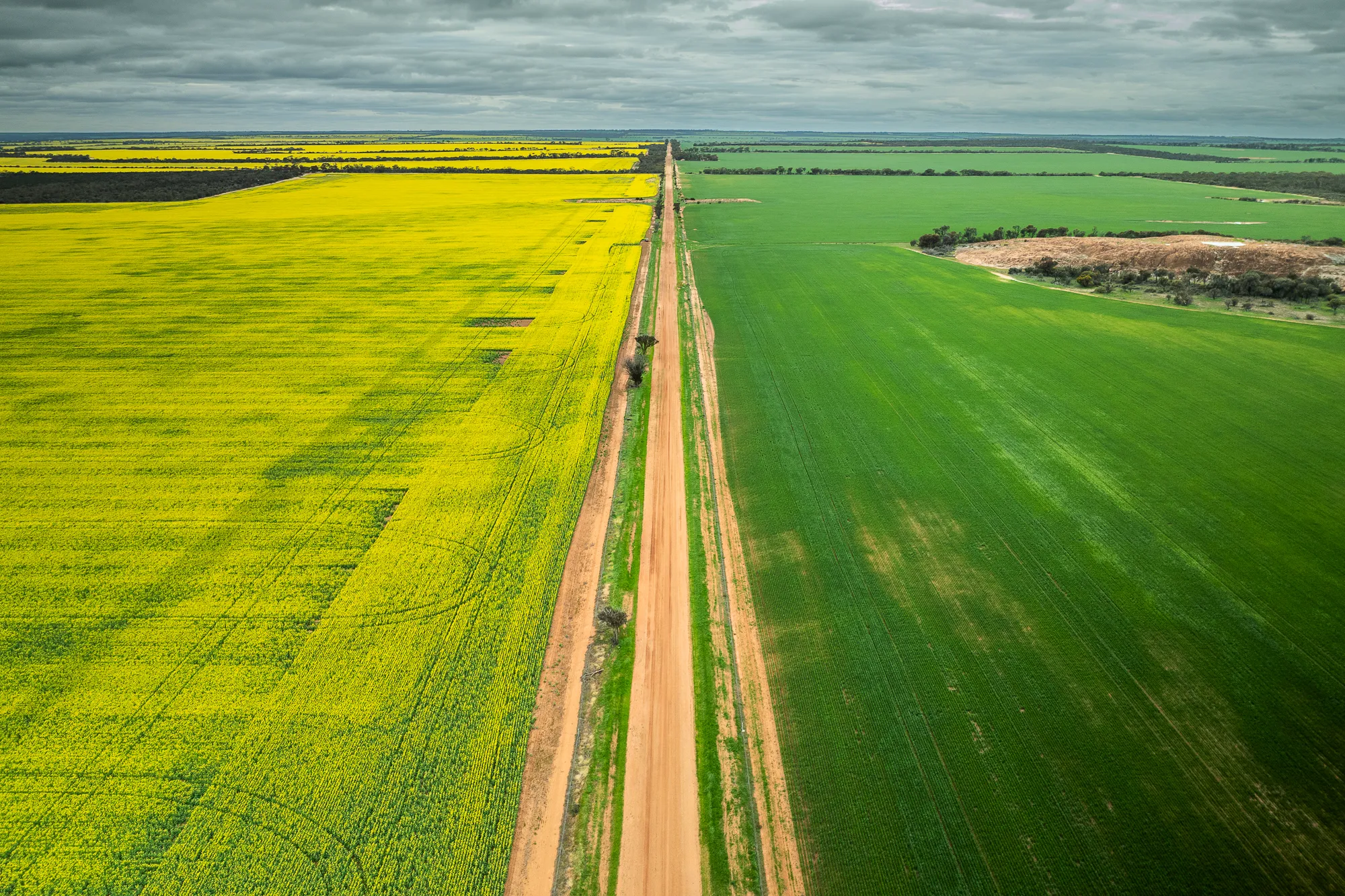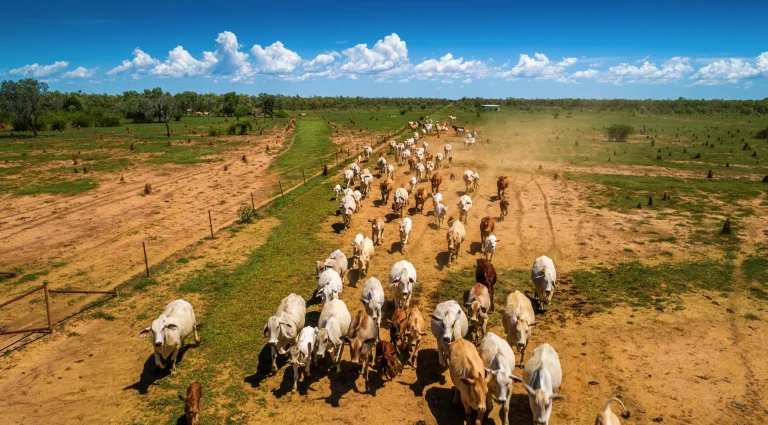Calculating Returns on Investment in Livestock Farming: A Strategic Financial Guide
When evaluating agricultural investment opportunities, calculating returns on investment in livestock farming requires a comprehensive understanding of both traditional financial metrics and industry-specific variables. This specialized form of agricultural analysis goes beyond simple profit calculations to incorporate factors like breeding cycles, feed conversion ratios, market volatility, and operational efficiency measures that directly impact long-term profitability.
At Agribusiness Horizons, we recognize that calculating returns on investment in livestock farming demands expertise in both agricultural economics and financial modeling. Our team works closely with livestock operators and investors to develop robust financial frameworks that account for the unique challenges and opportunities within this sector. Whether you’re considering cattle stations, sheep operations, or intensive livestock enterprises, we encourage you to contact our specialists who can provide tailored analysis for your specific investment scenario.
Understanding how to accurately assess livestock farming returns empowers investors to make informed decisions, optimize operational efficiency, and build sustainable agricultural portfolios that deliver consistent performance across varying market conditions.
The Foundation of Livestock Investment Analysis
Livestock farming represents one of the most complex agricultural investment categories due to its biological nature and extended production cycles. Unlike crop farming where returns can be measured annually, livestock operations often involve multi-year breeding programs, varying market cycles, and significant capital requirements for infrastructure and animal acquisition.
The foundation of sound livestock investment analysis begins with understanding the biological assets involved. Breeding stock represents both productive capacity and capital appreciation potential, while market animals provide immediate cash flow opportunities. This dual nature requires sophisticated financial modeling that captures both short-term operational returns and long-term asset value appreciation.
Modern livestock operations also benefit from technological advances in genetics, nutrition, and management systems. These innovations can significantly impact return calculations by improving feed conversion efficiency, reducing mortality rates, and enhancing overall productivity. Investors must consider these technological factors when projecting future performance and calculating potential returns on their livestock farming investments.
Key Financial Metrics for Livestock Operations
Successful livestock investment analysis relies on several specialized financial metrics that capture the unique aspects of animal agriculture. The most fundamental metric is the return on livestock investment, which measures the profitability of the animal enterprise relative to the capital invested in breeding stock, facilities, and working capital.
Feed conversion ratio stands as perhaps the most critical operational metric, measuring how efficiently animals convert feed into marketable products. This ratio directly impacts profitability and should be carefully monitored when calculating returns on investment in livestock farming. Operations with superior feed conversion ratios typically generate higher returns due to reduced input costs per unit of output.
Breeding efficiency metrics, including conception rates, weaning percentages, and average daily gain, provide crucial insights into the biological performance of the operation. These factors significantly influence cash flow timing and overall profitability. Additionally, mortality rates and health management costs must be factored into comprehensive return calculations to ensure accurate financial projections.
Market timing considerations also play a vital role in livestock return calculations. Understanding seasonal price patterns, market cycles, and demand trends helps optimize marketing strategies and maximize returns. Successful operators often employ strategic marketing approaches that capitalize on favorable market conditions while managing price risk through various hedging strategies.
Comprehensive Cost Structure Analysis
Calculating returns on investment in livestock farming requires thorough understanding of the complex cost structure inherent in animal agriculture. Feed costs typically represent the largest operational expense, often accounting for sixty to seventy percent of total production costs. These costs can vary significantly based on commodity prices, seasonal availability, and nutritional requirements specific to different livestock species and production phases.
Labor costs in livestock operations extend beyond basic animal care to include specialized skills in breeding management, health monitoring, and facility maintenance. The level of automation and management intensity directly impacts labor requirements and associated costs. Modern livestock operations increasingly invest in technology solutions that reduce labor demands while improving operational efficiency and animal welfare standards.
Infrastructure and equipment costs represent significant capital investments that must be amortized over the useful life of the assets. These include housing facilities, feeding systems, waste management infrastructure, and specialized equipment for handling and processing. The depreciation and maintenance of these assets significantly impact overall return calculations and require careful consideration in investment analysis.
Health management costs, including veterinary services, vaccines, medications, and preventive care programs, vary considerably based on management practices and environmental conditions. Effective health management programs often require higher upfront investments but typically generate superior returns through reduced mortality, improved performance, and enhanced product quality.
Market Dynamics and Price Volatility Considerations
Livestock markets exhibit unique characteristics that significantly impact return calculations and investment risk profiles. Commodity price volatility affects both input costs and output prices, creating complex risk management challenges for livestock operators. Understanding these market dynamics is essential for accurate return projections and effective risk mitigation strategies.
Seasonal price patterns in livestock markets reflect biological production cycles, consumer demand patterns, and supply chain dynamics. Cattle markets, for example, typically experience predictable seasonal trends related to grazing cycles and holiday demand periods. Savvy operators incorporate these patterns into their production and marketing strategies to optimize returns.
Export market opportunities increasingly influence domestic livestock prices, particularly in regions with strong international trade relationships. Currency fluctuations, trade policies, and global supply-demand balances all impact local market conditions and potential returns. Investors must consider these international factors when evaluating livestock farming opportunities.
Market integration and supply chain relationships also affect profitability and risk profiles. Operations with direct market access or value-added processing capabilities often achieve premium prices and more stable returns. These strategic advantages should be factored into comprehensive return calculations and investment evaluations.
Operational Efficiency and Performance Optimization
Maximizing returns on investment in livestock farming requires continuous focus on operational efficiency and performance optimization. Modern livestock operations employ sophisticated management systems that monitor animal performance, optimize feed utilization, and minimize waste throughout the production process.
Genetic improvement programs represent long-term investments that can significantly enhance operational returns. Superior genetics typically command premium prices while delivering improved performance characteristics such as faster growth rates, better feed conversion, and enhanced disease resistance. These improvements compound over time, creating substantial value for operators who invest in quality breeding programs.
Technology adoption in livestock operations continues to advance rapidly, offering opportunities for improved efficiency and enhanced returns. Automated feeding systems, environmental monitoring equipment, and precision agriculture tools help optimize resource utilization while reducing labor requirements. The return on investment for these technologies must be carefully evaluated as part of comprehensive financial analysis.
Facility design and management practices significantly impact operational efficiency and animal welfare outcomes. Well-designed facilities that optimize animal comfort, reduce stress, and facilitate efficient management practices typically generate superior returns through improved performance and reduced operating costs.
Risk Management and Financial Planning Strategies
Effective risk management forms a cornerstone of successful livestock investment strategies. Price volatility, production risks, and market uncertainties require comprehensive risk assessment and mitigation approaches. Insurance products, including livestock mortality coverage and revenue protection programs, provide important risk management tools for livestock operators.
Diversification strategies within livestock operations can help reduce overall risk profiles while maintaining attractive return potential. This might include multiple species, different production phases, or geographic diversification across various market regions. Each diversification strategy carries specific advantages and challenges that must be evaluated in the context of overall investment objectives.
Cash flow management in livestock operations requires careful attention to the timing of income and expenses. Breeding operations often experience extended periods between initial investments and revenue generation, requiring adequate working capital and financing arrangements. Effective cash flow planning helps ensure operational continuity and optimal return realization.
Financial leverage considerations in livestock investments require careful evaluation of debt capacity and repayment ability. While leverage can enhance returns during favorable market conditions, it also increases financial risk during downturns. Optimal capital structure decisions depend on risk tolerance, market outlook, and operational characteristics of the specific livestock enterprise.
Comparison of Livestock Investment Approaches
| Investment Approach | Capital Requirements | Risk Level | Return Potential | Management Intensity |
|---|---|---|---|---|
| Breeding Operations | High | Moderate | Steady appreciation | High |
| Feedlot Operations | Moderate | High | Variable | Moderate |
| Integrated Systems | Very High | Moderate | Premium potential | Very High |
| Contract Production | Low | Low | Stable | Low |
This comparison illustrates the trade-offs between different livestock investment approaches when calculating returns on investment in livestock farming. Each approach offers distinct advantages and challenges that must be carefully evaluated based on investor objectives, risk tolerance, and management capabilities.
Agribusiness Horizons’ Livestock Investment Expertise
At Agribusiness Horizons, our specialized approach to livestock investment analysis combines deep agricultural knowledge with sophisticated financial modeling capabilities. We understand that calculating returns on investment in livestock farming requires expertise in both animal agriculture and investment analysis. Our team works closely with clients to develop comprehensive financial models that capture the unique aspects of livestock operations while providing clear insights into return potential and risk factors.
Our valuation and financial analysis services incorporate livestock-specific metrics and industry benchmarks to ensure accurate return calculations. We evaluate breeding programs, operational efficiency measures, and market positioning to provide comprehensive investment insights. This specialized expertise helps our clients make informed decisions about livestock investments and operational improvements.
We also provide strategic advisory services that help optimize livestock operations for enhanced returns. This includes facility design recommendations, technology adoption strategies, and market positioning advice. Our comprehensive approach ensures that clients maximize their return potential while effectively managing the inherent risks in livestock farming.
Whether you’re evaluating an existing livestock operation or considering new investment opportunities, our team provides the specialized expertise needed to accurately calculate returns and develop effective investment strategies. Contact us to learn how our livestock investment analysis services can support your agricultural investment objectives.
Technology Integration and Future Trends
The livestock industry continues to evolve rapidly with technological advances that significantly impact return calculations and investment opportunities. Precision livestock farming technologies, including sensor systems, automated monitoring, and data analytics platforms, provide unprecedented insights into animal performance and operational efficiency.
Genetic technologies, including genomic selection and reproductive technologies, offer opportunities for accelerated genetic improvement and enhanced returns. These advanced breeding tools can significantly reduce generation intervals while improving the accuracy of genetic selection decisions. The return on investment for these technologies continues to improve as costs decrease and effectiveness increases.
Sustainability initiatives and environmental stewardship programs increasingly influence livestock investment returns. Carbon sequestration opportunities, methane reduction technologies, and sustainable production practices can generate additional revenue streams while enhancing operational efficiency. These environmental benefits should be incorporated into comprehensive return calculations for modern livestock operations.
Market trends toward premium products, including grass-fed beef, organic dairy, and welfare-certified products, create opportunities for enhanced returns through product differentiation. Operations that successfully position themselves in these premium markets often achieve superior returns despite higher production costs.
Conclusion: Maximizing Your Livestock Investment Returns
Calculating returns on investment in livestock farming requires a comprehensive understanding of the unique financial, operational, and market factors that influence livestock profitability. Successful livestock investors combine traditional financial analysis with specialized agricultural knowledge to develop robust investment strategies that deliver consistent returns across varying market conditions.
The complexity of livestock investment analysis underscores the importance of working with experienced professionals who understand both the agricultural and financial aspects of these investments. From breeding program evaluation to market timing strategies, every aspect of livestock operations impacts overall return potential and requires careful consideration.
As you consider your livestock investment opportunities, ask yourself: How can advanced genetic technologies enhance the long-term profitability of your livestock operation? What role should sustainability initiatives play in your investment strategy? How can you optimize your operational efficiency to maximize returns while managing inherent risks?
At Agribusiness Horizons, we’re committed to helping livestock investors achieve their financial objectives through expert analysis, strategic planning, and comprehensive support throughout the investment process. Our specialized expertise in calculating returns on investment in livestock farming ensures that you have the insights needed to make informed decisions and maximize your agricultural investment potential. Contact our team today to discuss how we can support your livestock investment goals and help you build a profitable, sustainable agricultural portfolio.



